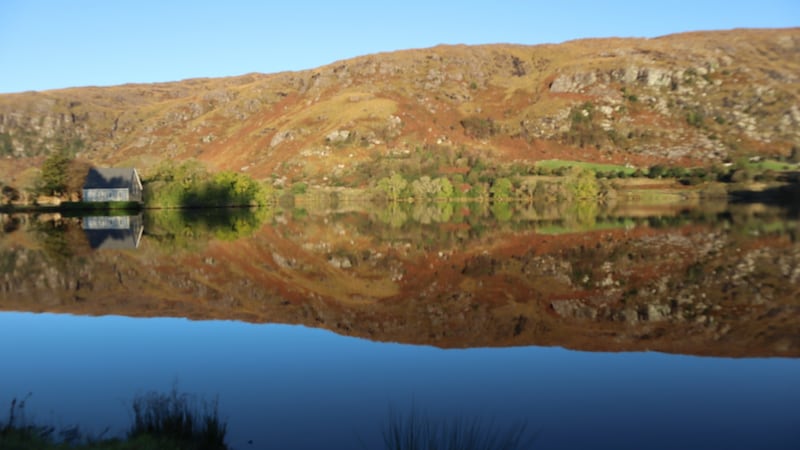The Beara-Breifne Way, which runs from Castletownbere to Cavan, is Ireland's longest Way-marked Way, following the 500km, 14-day march undertaken by Donal Cam, chieftain of the O'Sullivan Beara Clan, and 1,000 of his followers to seek sanctuary in Leitrim after the Battle of Kinsale.
This was in December 1603. Cam was in serious trouble as he had written a letter submitting himself to the king of Spain, which was intercepted by the English. This was treason for which the only penalty was death. To avoid this fate, he took the decision to head off in winter snow, prepared to pillage his fellow countrymen along the way for food, as well as fend off attacks from both Irish and English hostile forces. It is small wonder that only 37 of the 1,000 survived, the rest killed in ambushes or stricken by hunger and exposure.
Donal Cam is a hero in Beara, but he sounds like a Charge of the Light Brigade character to me.
So why was I here? Mainly to honour the remarkable achievement of the people who planned and way-marked it and who gained the co-operation of many landowners. There are six mountainous sections along the route.
The first part of the route is on road, which I opted to drive to the point where the track starts. Here an octagonal wooden shelter has been erected. The route, through moorland with a good scattering of boulders, is well marked and leads up to Foilastookeen (540m). Before reaching it, I veered off to the west to summit Conigar (An Coninicear/The Rabbit Warren), 566m. From here there is a terrific view across the Borlin Valley to the perfectly rounded coom of Lough Nambrackderg (Loch na mBreach Dearg/Lake of the Red Trout).
The long ridge leads to the rather inconspicuous peak of Knockboy (An Cnoc Bui/The Yellow Hill), which, at 703m, is the highest mountain in Co Cork.

Tracking back to Foilastookeen provided a superb view down into Gougane Barra, with the sheer cliffs on the western side of the spur that leads down to the lake. This is a well-trodden path and muddy in parts. Sitting on the wall by the lake, the view was magical: the low winter sun turned the steep slopes on the northern side to gold, which was perfectly mirrored in the still waters.
It was almost too perfect a scene in which to contemplate the ecclesiastical tale that St Finbarr built a monastery there. The monastic ruins date from the 17th century and the oratory was built in the 19th. St Finbarr died in AD 623 and the Life of St Finbarr wasn’t even written until the 13th century, when it was decided that Cork needed a patron saint. The cult of St Finbarr was well established around the country, so he was selected.
I wonder: was the writer of the Life called Brother Boris?
Beara-Breifne Way, Kealkil to Gougane Barra section, Co Cork
Map: Ordnance Survey Discovery Series, Sheet 85
Start: Trail head near top of L 8781. Grid Reference 074 618
Finish: First Car Park at Gougane Barra. Grid Reference: 093 660
How to get there: Turn left off the R584, Kealkil to Beal Atha an Ghaorhaidh road, on to the L 8781, 2km north east of Kealkil.
Time: 4 hours.
Distance: 9km.
Total ascent: 570m.
Suitability: Route is moderate.
Food and accommodation: Gougane Barra.










